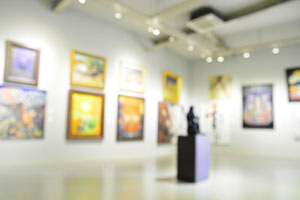Art experts from around the world are gathering in a federal courtroom in Manhattan to testify in a case alleging that a prominent New York gallery fraudulently sold forged art. The lawsuit involves a painting of black and red rectangles, attributed to Mark Rothko, that was actually painted by a Chinese immigrant in Queens. The gallery, Knoedler & Company, sold the painting in 2004 to Domenico and Eleanore De Sole for $8.3 million. The gallery closed its doors after it was flooded with lawsuits and is now in the hands of a holding company.
The De Soles are seeking $25 million in damages. A key issue in the trial is whether the gallery or its director, Ann Freedman, were aware that the Rothko was a fake when Knoedler sold it to the De Soles.
Allegations of Fraud
Over the course of 15 years, Knoedler sold about 30 forged paintings that were attributed to abstract artists, including Pollock, de Kooning, and Rothko. Collectors paid about $63 million for the combined works. The forgeries were supplied to Knoedler by Glafira Rosales, a Long Island art dealer who claimed she acquired them from art collections in Zurich and Mexico City.
Rosales was convicted of several fraud charges in 2013. The forger, who fled to China, told an interviewer that he was not paid significant sums for the works and did not know that they were being resold as originals.
During the first week of trial, Domenico De Soles testified that he based his decision to purchase the Rothko on the gallery’s reputation for honesty and made no significant effort of his own to authenticate the painting. He said he also received a letter from Freedman stating that the Rothko had been viewed by eleven individuals “with special expertise on the work of Mark Rothko,” including art historian Irving Sandler and Rothko’s son. The De Soles took the letter as verification of the painting’s authenticity, while Freedman’s lawyer made the point that the letter said “viewed” rather than “authenticated.” The jury might think that Freedman’s lawyer is splitting hairs if it regards the letter as implying that none of the art experts who viewed the painting had doubts about its origin.
The De Soles allege that Freedman and the Knoedler gallery knew the painting was forged, or deliberately disregarded evidence that the painting was not authentic. According to the De Soles, Freedman should have realized the Rothko was a forgery when she was able to purchase an $8.3 million painting from Rosales for $950,000.
Freedman argues that she purchased art from Rosales for her own collection, including a $280,000 Pollock, without realizing that she was buying forgeries. The De Soles’ lawyer contends that Freedman purchased the forged works for herself as a promotional device and to bolster her credibility with customers.
The lawsuit will hinge on proof that Freedman knew, or at least suspected, that the Rothko was a fake. If she concealed such knowledge or suspicions from the De Soles, the jury would have a basis for concluding that she acted fraudulently.
Expert Testimony
Among the experts called in the first week of trial, Dana Cranmer, the former conservator for the Rothko Foundation, testified that he was unaware that Freedman used his name in the letter that was sent to the De Soles. He was uncertain whether he ever saw the painting that was sold to the De Soles, although he recalled looking at a Rothko in Freedman’s office for five or ten seconds. He testified that he did not authenticate it because “that’s not what conservators do.” His expertise is in preserving paintings rather than authenticating them.
Rothko’s son also testified that he did not know Freedman included his name in her letter. He denied that he has ever authenticated any of his father’s paintings. Another person named in the letter, Rothko expert David Anfam, said he had only seen transparencies of the painting, not the original. He also denied authenticating the painting. Anfam admitted, however, that he placed another Rothko forgery in an exhibition, believing it to be authentic.
Other experts who are likely to contribute important testimony during the course of the trial include art appraisers and forensic accountants. James Martin, a paint analysis expert who initially determined that the Rothko and other paintings that Rosales sold to Knoedler were fakes, is expected to explain how the forgeries could have been detected.
Freedman initially maintained that Martin’s scientific analysis was faulty but dropped that assertion after the forger was identified. Freedman now bases her defense on the claim that she relied on experts who authenticated the forged Rothko before she purchased it. The testimony of those experts will be central to her claim that she was duped.
Robert Wittman, founder of the FBI Art Crime Team before beginning a career in private art security, is also expected to testify as an expert on Freedman’s behalf. The extent to which he will be allowed to express opinions about the relative responsibilities of the De Soles and Freedman to research the painting’s origin remains a point of contention.
Shining a Light
Expert testimony serves to educate the jury, but broader audiences are often interested in what experts have to say. According to artnet News, the “parade of experts and insiders expected to take the stand in the coming weeks” will likely “shine a light into the often murky and secretive practices surrounding high-stakes art sales.”
In addition to opening a window to the art world, the trial may answer questions about the ability of art experts to authenticate paintings. If, as Freedman claims, experts told her that the Rothko was real, art buyers need to be concerned that customary art authentication procedures may be inadequate to protect their investments.




